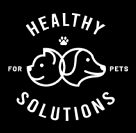
As you might imagine, I’m asked a lot of questions during pet health appointments. But with inquiries ranging from anxiety to dental health, the most popular topics relate to diet and weight.
Many pup and kitty parents are concerned about their pets being overweight, and for good reason. The Association for Pet Obesity Prevention’s 2018 survey reveals that there has been very little reduction in pet obesity statistics over the last couple of years.
The Statistics
According to the most recent 2018 survey, about 60% of cats and 56% of dogs are classified as overweight or obese. The survey also showed that there is mounting confusion among both pet parents and veterinary professionals about the most effective weight-loss methods.
Part of the underlying cause for confusion with weight and diet stems from how many infinite diet choices are available for pet parents to choose from.
In the last decade or so, there has been far more scrutiny regarding pet diets due to recalls. People are also, in general, far more conscious about what they put in their own bodies, and this translates over to their fur babies as well.
In this article, we’ll discuss 4 main topics:
- Basic reasons why we’ve seen obesity issues in pets
- How a pet being overweight or obese affects overall health
- Basic ways you can tell if your pup or kitty is overweight
- Some basic ways to address obesity as a pet parent
Why do we see obesity in pets at all?
This is certainly a bit of a loaded question, but it’s not like dogs and cats have always been overweight.
The Association for Pet Obesity Prevention was formed back in 2007 with their first preliminary data surfacing in 2008. At that time, about 43% of dogs were classified as overweight or obese, and 53% of cats.
In both cases, though more severely for dogs, these trends have increased over the last 11-12 years. So even back then, obesity was still a recognized issue but this suggests that the trend started long before that, by at least a couple of decades.
So again, what’s happening? I feel that there are two overarching reasons that stem both from our changing relationships with our pets as well as changes in our human society as well.
First, the human-animal bond has changed significantly, even in recent decades. Some research shows that the origin of the human-animal bond may go back over 15,000 years.
But for centuries, dogs and cats served in far more functional capacities. Dogs were used for herding and hunting, while cats were kept around to hunt rodents, which were known for spreading disease.
There are certainly exceptions to this view depending on culture. It is clear based on their art history for example, that the ancient Egyptians highly revered cats, with feline ownership above and beyond what we know today.
But general use and utility of dogs and cats has only within the last half century or so made a significant transition to dogs and cats as cherished companions in their own right and full-fledged family members as opposed to having a “function”.
James Herriot, the pen-name of British veterinarian James Alfred Wight, practiced largely during the mid to late 20th century. During his early career in the 1940’s, exclusive small animal veterinarians were very rare. Dr. Herriot would often tend to dogs and cats living on farms where he also saw horses and cattle. Exclusive small animal veterinary practice still didn’t develop to what we know today until at least the later part of the 20th century.
Prepared pet foods did not develop substantially until after World War I. Canned cat food wasn’t even a thing until the 1930s. Due to metal and meat rationing during World War II, dry cereal-based foods became highly favored. By the 1960s, with consumer pressure and successful advertising, canned and dry pet foods became the norm we know of today.
So why are these distinctions important? First, dogs and cats largely lived outdoors and had very specific jobs to do, keeping them regularly active to a high degree. Herding and hunting take a lot of work.
Second, cereal-based foods, and later dry foods, have contributed to foods much higher in carbohydrate percentage compared to fat and protein. While carbohydrates are essential to nutrition, an appropriate balance of all nutrients is as well.
Third, our society has transitioned from one of active, outdoor work lifestyles, to one of being more indoor and sedentary with activity being an optional extracurricular activity. Taking the dog out for a 15 minute jog can be hard to fit in.
Our busier lives have also led to more being done but with less attention to detail. I can’t begin to relate how many folks feed their pets regularly at a certain time but aren’t sure exactly how much they feed them or even what the food brand is. Some folks just continue to refill the bowl whenever it’s empty. According to a 2019 article in Science Daily, nearly 90% of pet owners approach feeding this way, with only 1 in 5 pet parents measuring out exactly what’s required.
Last, as pets have become more like close family members, they are treated with more blind love and affection. Feeding food, which pets love, is often seen as a sign or source of affection. Thus, a pup who looks “unhappy” or learns to beg can get a lot of extra treats or some special perks from the table.
All of these factors in one way or another, increasing over decades, have contributed to our current obesity epidemic.
How a pet being overweight or obese affects health
Why particularly care at all? What’s a few extra pounds?
Obesity contributes to disease in a couple of ways. The presence of too much fat puts the body in a pro-inflammatory state. Inflammation leads to formation of free radicals in the body that can damage cells. This process can also lead to some kinds of cancers.
The added weight also puts a lot of strain on the joints and cardiovascular system. Pets with pre-existing arthritis will find that the added weight perpetuates the strain and reduces mobility. Injuries like the dreaded “ACL tear” are more common in obese dogs. Reduced mobility in turn leads to further weight gain and a vicious cycle ensues.
Dogs and cats don’t develop arteries clogged with plaque like people do. But added weight still takes a toll on the heart, making the cardiovascular system work that much harder. This can lead to poor circulation and high blood pressure.
This effect on the heart can exacerbate pre-existing heart-disease in pets genetically predisposed to certain types of degenerative cardiac conditions like mitral valve disease, dilated cardiomyopathy, or hypertrophic cardiomyopathy in cats.
Cats in particular see some more unique effects of being obese. According to a 2018 study in Acta Veterinaria Scandinavia that comprehensively looked at diseases associated with being overweight as well as risk factors, diabetes and urinary tract disease were highly associated.
Cats develop a type of diabetes similar to Type II in people. Being overweight or obese leads to insulin resistance and the inability for glucose to be carried from the blood stream into cells which need it for energy.
This condition is almost exclusively seen in obese cats and can be very difficult and expensive to manage.
Feline Lower Urinary Tract Disease is a syndrome describing a variety of conditions that affect the bladder and urethra in cats. Often referred to by its acronym FLUTD and sometimes also referred to as Feline Urologic Syndrome (FUS) this collection of conditions affects male cats more and involves urinary straining, increased frequency of urination, and often blood in the urine.
FLUTD is also connected to the feared emergent condition of the “blocked cat” where a cat’s urethra and ability to urinate is obstructed by bladder stone material, a mucous plug, or inflammation and is typically fatal if not addressed within 24-48 hours.
While not a necessary requirement for development of FLUTD, obesity in cats is a major risk factor for this condition.
Regardless of the specifics, we know that in general, overweight pets live shorter lives. An extremely comprehensive study published in 2018 in the Journal of Veterinary Internal Medicine examining over 50,000 dogs across 12 of the most popular breeds found that overweight and obese dogs live up to 2 and ½ years less than their ideal weight counterparts.
That Slim Figure
So now that we know what we’re concerned about, how do we start to counter this problem? Well, the first place is learning how to recognize that a pet is overweight in the first place. The Association for Pet Obesity Prevention has found that about 90% of cat owners and 95% of dog owners with overweight pets incorrectly perceive that their pet is a normal weight.
First, we’ll go over some general ideas to get the ball rolling, then we’ll dive into specifics, such as how a veterinarian assesses a pet’s weight.
A good general guideline for figuring out if your dog is overweight, is to look at her from the top down. She should have a dip in her waist just behind the ribs, creating a “Coke-bottle” shape. Her belly should also tuck up towards her groin. Contrary to some belief, it should be normal for you to be able to feel your dog’s ribs, but just the last two or three, and with only the slightest pressure.
If you can’t feel any ribs at all and your dog appears flat or “box-shaped” from the top and the sides, you should be concerned about her weight.
How about cats?
You can assess a cat similarly, as you should be able to feel the last couple of ribs if you run your fingers over them and press just a little. I do find however that instead of the Coke-bottle shape, healthy cats are more just flat and lean when you look from the top down.
Cats are lean, agile hunters, and they should look it. If you have trouble picturing what a cat at a healthy weight should look like, just imagine a cheetah or lion and how slim, trim, and muscular they look in the wild.
Body Condition
When getting into specifics for assessing a healthy weight, veterinarians use a system called body condition scoring (BCS). Body condition scoring utilizes a scale, typically from 1-9, and assigns a pet a number based on some objective criteria like fat covering, appearance and/or ability to feel ribs, the presence of a waist, etc.
The best benefits of the body condition scoring system are that it is very quick to use and that the system is very visual. There are numerous charts available with picture examples of cats and dogs at each BCS level, including this one on the Pet Obesity Prevention site courtesy of the World Small Animal Veterinary Association (https://petobesityprevention.org/pet-weight-check)
The downside to the BCS system is that while it is simple to use (your vet can just pull out one of the charts and show you where your pup or kitty sits on the scale) and although it tries to use some objective criteria, there is still a lot of subjective interpretation. Even when comparing two experienced practitioners, you might have at least a 1 point difference in their assessments.
But even so, having a BCS chart at home can be a great place to start in assessing your pet’s weight yourself.
There is another extremely accurate way to assess a pet’s weight and body condition using a proprietary set of body measurements developed with Hill’s pet nutrition at the University of Tennessee. Called the Healthy Weight Protocol, these measurements, once plugged in, will provide a veterinarian with a pet’s ideal weight, body fat percentage, and the amount of kilocalories needed to feed for weight loss.
While this system is the most accurate out there, it requires getting several length, width and circumference measurements with a tape measure. Besides taking 10 minutes of appointment time and introducing more error with incorrect measurements, I have often found that many pets, especially cats, just don’t like to sit still to be measured.
What to Do
So now you know how to assess your own pet for being overweight or obese. But now what do we do if we find they do need to lose a couple of pounds?
The first place to start is with food, because some simple adjustments can make all the difference.
First, get a measuring cup to portion out your pup or kitty’s food. A “cup” seems to mean different things to different folks, ranging from a small paper Dixie cup all the way to a Big Gulp cup from 7-Eleven. Use an actual measuring cup. You’re likely to already have one in your kitchen. Many veterinary clinics also have measuring cups provided by pet food companies, to give out for free.
You can also use a very inexpensive gram scale to weigh your pet’s food, which takes little to no additional time.
The next step is to find out how many kilocalories your pet needs per day. The best thing to do is to ask this question of your pup or kitty’s doc during an appointment, but you can calculate it out here, as long as you know your fluffy pal’s weight in pounds.
Here’s the simple version of the equation to use:
Kilocalories per day = ((Weight in pounds/2.2) x 30) + 70
And if you’re like, “Oh, no–math!”, here’s an explanation. Take your dog or cat’s weight in pounds and divide by 2.2. This gives us his weight in kilograms, which we need for the equation. Then take your friend’s weight in kilograms and multiply by 30. Take that value and add 70 to it.
The number you get here is called your resting energy requirement, or RER. What we need is called the maintenance energy requirement, or MER. To get that, you simply need to multiply your RER by a life stage factor. These are somewhat preset numbers. For example, your average spayed or neutered adult dog’s factor is roughly 1.5. A really young puppy up to 4 months of age has a factor of 3, and your adolescent dog between 4 months and 1 year has a factor of 2. For dogs or cats trying to lose weight, it’s generally acceptable to use 1 as the factor.
Once you multiply your RER value from the equation by the life stage factor, you’ll get your MER. Now, to figure out how much food your pup or kitty should be getting per day, take your MER value and divide it by the kilocalories per cup or can as stated on the food packaging. Usually, the kcal is stated somewhere near the ingredients label. Many pet food manufacturers will also include this value on their websites for individual foods.
Dividing by the kcal on the bag or can of food will give you how ever many cups or cans per day your pet needs.
How often?
While you can feed your pet at whatever frequency you wish (as long as you don’t exceed the daily amount you calculated), it is generally accepted that smaller, more frequent meals are best to keep metabolism higher. Whatever you calculate for the number of cups or cans your pet needs, split this into at least 2-3 meals. I actually try to feed my cats four times a day when possible.
Smaller, frequent meals keeps satiety more stable and will make your pet less prone to hunger cravings.
What about treats?
Treats are great, our pets love them. But they can also bring about the complete downfall of a weight loss plan.
The general rule is that we don’t want treats to make up more than 10% of our diet when talking about kilocalories per day. And stay away from “junk” treats with high calories and sugar. According to Dr. Ernie Ward, one of the founders of the Association for Pet Obesity Prevention, just an extra 30 kilocalories per day can lead to an extra 3lb over the course of one year.
Where do some treats fall? Your average small milk bone is about 25 kilocalories. But if your dog is a lover of bully sticks, you’re looking at 10-20 kilocalories per inch according to Tufts University’s Clinical Nutrition Service. That means an average 6-12 inch bully stick could range from 60 kcal up to over 200 kcal per stick. In truth I saw some advertised that were over 300 kcal per 12 inch stick.
Also, in case you don’t know what a bully stick is or where the name comes from, it’s an uncooked, dried bull or steer penis. That’s right. How’s that for a popular byproduct?
Good treat alternatives can be very simple. Dr. Ward suggests fresh veggies like baby carrots and sliced or cubed cucumber and zucchini. If you do treat your pup with a cookie like a milkbone, make sure to break it up into small pieces over the course of the day.
Lastly, if you plan to feed your dog treats, let your vet know, so that treats can be factored into the daily feeding amounts. Another simple thing to do is to save a small portion of dry kibble for the day, and use individual kibbles as treats.
Don’t forget about supplements
Supplements contain calories too! They may not have many per serving, but be cognizant of what the kcal per serving is. I once had a pup parent who insisted that she was feeding the right amount of food we had discussed, and yet her dog, a Great Pyrenees, continued to gain weight.
We eventually discovered that, in order to keep his coat healthier, she had been top-dressing his food with coconut oil. What this well-meaning pup owner didn’t realize is that one tablespoon of coconut oil contains about 120 kilocalories. She had been adding about 2-3 tablespoons per meal! Once we cut back on the coconut oil, her dog lost weight marvelously.
The point is, make sure to disclose everything to your veterinarian that you feed or add to your pup or kitty’s food when discussing diet, even if you don’t think it’s important. Your vet needs as much information as possible to help.
The Biggest Loser
How much weight should your pet be losing? First, you need to start with what your pet’s ideal weight should be. Your veterinarian is the best to determine this for your individual pet, but the Association of Pet Obesity Prevention has a chart on their site listing ideal weight ranges for multiple dog and cat breeds. (https://petobesityprevention.org/ideal-weight-ranges)
Dogs can safely lose about 1-3% of their body weight per month and cats can lose about 0.5-2% per month. As an example, a dog whose ideal weight is 25 lb but who currently weighs 35 lb, could safely lose about 1 lb per month. In a cat’s case, a 15 lb cat whose ideal weight is 10 lb can lose about ⅓ of a lb per month.
You might marvel at how long that might take, depending on how overweight your dog or cat is. But slow steady weight loss is important. If a pet loses weight too fast, serious disease can result. I’m typically ecstatic if I see one of my feline patients has lost 1-2 lb from the previous year.
What type of Diet
Many folks are concerned about diet type and how it may affect weight loss. So does your dog or cat need a special diet to lose weight? The answer is, possibly.
According to Dr. Ward, we should focus on lower carb diets, as many pet food diets are over 60% carbohydrates. For weight loss especially, we should focus on a lower carb / high protein / high fiber diet combo.
And don’t fall into the trap of believing that a grain free diet is the same thing as carb-free. There is no such thing as a well-balanced carb-free diet, as carbohydrates are necessary nutrients. But there are plenty more carbs out there than just grains (like peas and lentils), and grain free diets can still be high in carbs.
There are prescription weight-loss diets available that follow the low carb / high protein / high fiber formula and often these are what veterinarians will recommend because they have accurate, reliable formulation. If your pet is really struggling with weight loss, investing in a prescription weight-loss diet can be worth it.
Lastly, if you’re scanning for over-the-counter diet choices, look for one that is less calorie dense at less than 350 kcal per cup, as the lower calorie density can help with satiety. Your pet will eat more food literally, but will be taking in fewer calories per serving.
Activity
Activity is important too. The Association of Pet Obesity Prevention recommends 30 minutes of activity for a dog per day, which can even include just a brisk walk. For cats, the Association recommends 15 minutes of intense play per day, which can be split into 5 minute periods over the course of the day (we all know the attention spans of cats).
Closing (the gap)
If your pet is overweight, starting closing that gap between current weight and ideal weight today, with some of the tips that have been shared.
Not sure if your pup or kitty needs to lose some pounds? Your veterinarian is going to be the best resource to help you figure out if your pet is overweight, how much weight she needs to lose, and how to adjust feeding and exercise to get there.
Keeping your pet at an ideal weight is an ideal way to keep him healthy much longer into the future. It means an extra 2-3 years with your beloved friend and you owe it to both of you to get started now.
About Us
We've taken the guesswork out of caring for your pets. Our formulations are created by experienced veterinarians to address specific solutions for a variety of pet issues.
All of our products are:
As seen on:











